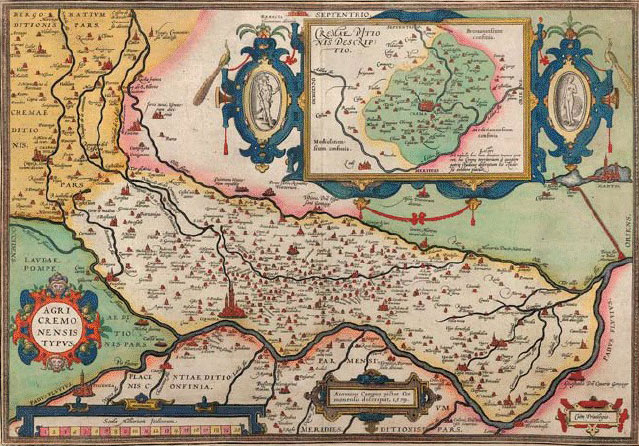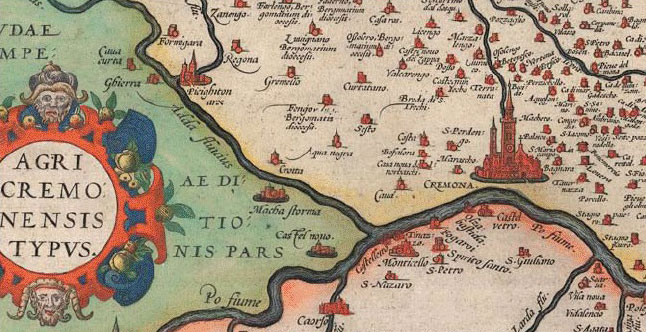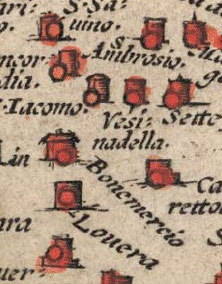- Relief printing
- Intaglio and planographic printing
- Color printing
- Bits and pieces
- Early photography in silver
- Non-silver processes
- Modern photography
- Color notes
- Color photography
- Photography in ink: relief and intaglio printing
- Photography in ink: planographic printing
- Digital processes
- Where do we go from here?
Hand Coloring and stencil

Hand-colored copper engraving. Antonius Campus. Map of the Fields of Cremona. 1579. 13 3/4 x 19 13/16" (35 x 50.3 cm). The Museum of Modern Art, New York. Gift of Richard Benson.
This map is an engraving, printed in black ink from a single copper plate. Once the sheet was dry it was colored by hand, using watercolors. It is hard to tell whether the colors were applied by painting or put on with stencils, to give some repeatability to the washes throughout the edition. In either case this picture is really both a print and a painting, part of its information deriving from a printing plate and part coming from the hand. If the map was painted, the colors were applied with a brush, but if it was stenciled the artist probably used a cloth ball called a “dauber,” patting it first on an ink source and then gently on the print surface.

Detail of Hand-colored copper engraving. Antonius Campus. Map of the Fields of Cremona. 1579. 13 3/4 x 19 13/16" (35 x 50.3 cm). The Museum of Modern Art, New York. Gift of Richard Benson.

Detail of Hand-colored copper engraving. Antonius Campus. Map of the Fields of Cremona. 1579. 13 3/4 x 19 13/16" (35 x 50.3 cm). The Museum of Modern Art, New York. Gift of Richard Benson. The small red spots applied to the individual towns have been rapidly painted by a dab with a brush, for which no stencil was necessary.
Stencilers also used specialized round brushes, which could be held vertically to apply controlled amounts of color. When properly used these tools could create the blended edges of the colors that we see along the river borders on the map. Often the stencils, cut in stiff paper, could give a hard, sharp edge that looks just as if it has been painted with a conventional brushstroke; then the dauber, carefully applied, could produce a blend on the other side. We can see such an application in the upper left of the map, where a yellow area meets a red, without a black engraved line obscuring the join. The technical term for a black-and-white print colored through the use of stencils is “pochoir,” a French term for “stencil.”

